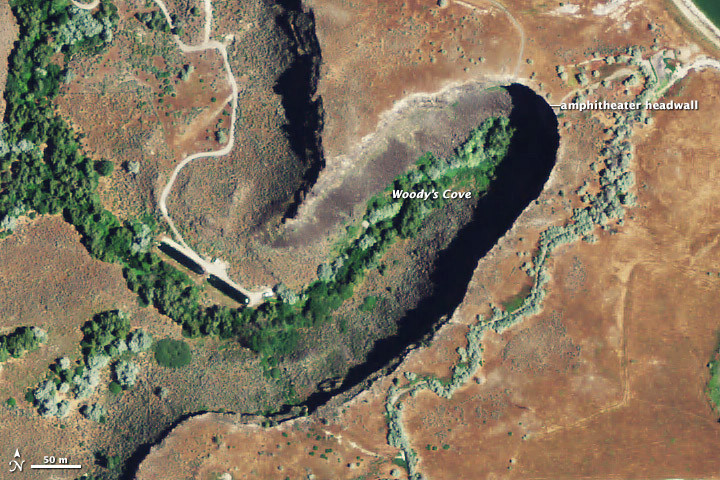Penis-Shaped Gorges on Earth and Mars Provide Clues for How Landscapes Formed

Two penis-shaped gorges located on Earth that are similar in shape to canyons observed on Mars, show these were formed under similar circumstances, researchers have said.
Scientists at Nasa's Earth Observatory have examined the amphitheatre-headed canyons of Malad Gorge and Woody's Cove after noticing a strong resemblance to the canyons on Mars.
Researchers believe that the Idaho landscapes probably formed under similar circumstances, with both being created during a "mega-flood" that took place almost 50,000 years ago.
Published in the Proceedings of the National Academy of Sciences, researchers were looking at different theories as to how the canyons on Mars formed.
Woody's Cove is almost identical in shape to Echus Chasma on Mars. Researchers understand that ancient volcanic flows piled up on top of one another, creating a stack of horizontal layers of basalt.
Meanwhile on Mars, the canyons were probably formed from layers of basalt. Both canyons, the authors say, cut into a flat lava plateau.
One theory put forward is that the amphitheatre-headed canyons were formed from groundwater eroding the soft underlying rock, meaning the harder overlying rock collapsed. However, authors Michael Lamb, Benjamin Mackey, and Kenneth Farley say this is not the case.

They note how the Malad Gorge is scoured with subtle grooves, suggesting water flowed over it. Also, debris and a tilt normally left from a groundwater-induced collapse are missing – the walls are straight and empty pools – possibly from a waterfall – sit in the canyon's head.
For these reasons, the authors believe the canyons at Woody's Cover and Malad Gorge probably formed from a mega flood that took place 46,000 years ago.
The flood was strong enough to hollow out the canyon and carry the debris away. This also created huge waterfalls still preserved in the walls of the canyon head.
If Echus Chasma formed in a similar way, then Mars had a very wet past. It would have included short, highly intense floods—such as from a dam burst or lake spill-over like those that occurred at the end of the last ice age on Earth," the authors conclude.
"The shapes of bedrock canyons offer clues to the history of surface water on Earth and Mars. Using field examples in Idaho, we found that canyons with amphitheatre-shaped heads were likely carved rapidly by outburst flooding about 46,000 years ago ... Our study suggests that the many amphitheatre-headed canyons in fractured basalt on Mars, long inferred to be carved by groundwater seepage, may owe their origins instead to megafloods."
© Copyright IBTimes 2025. All rights reserved.






















